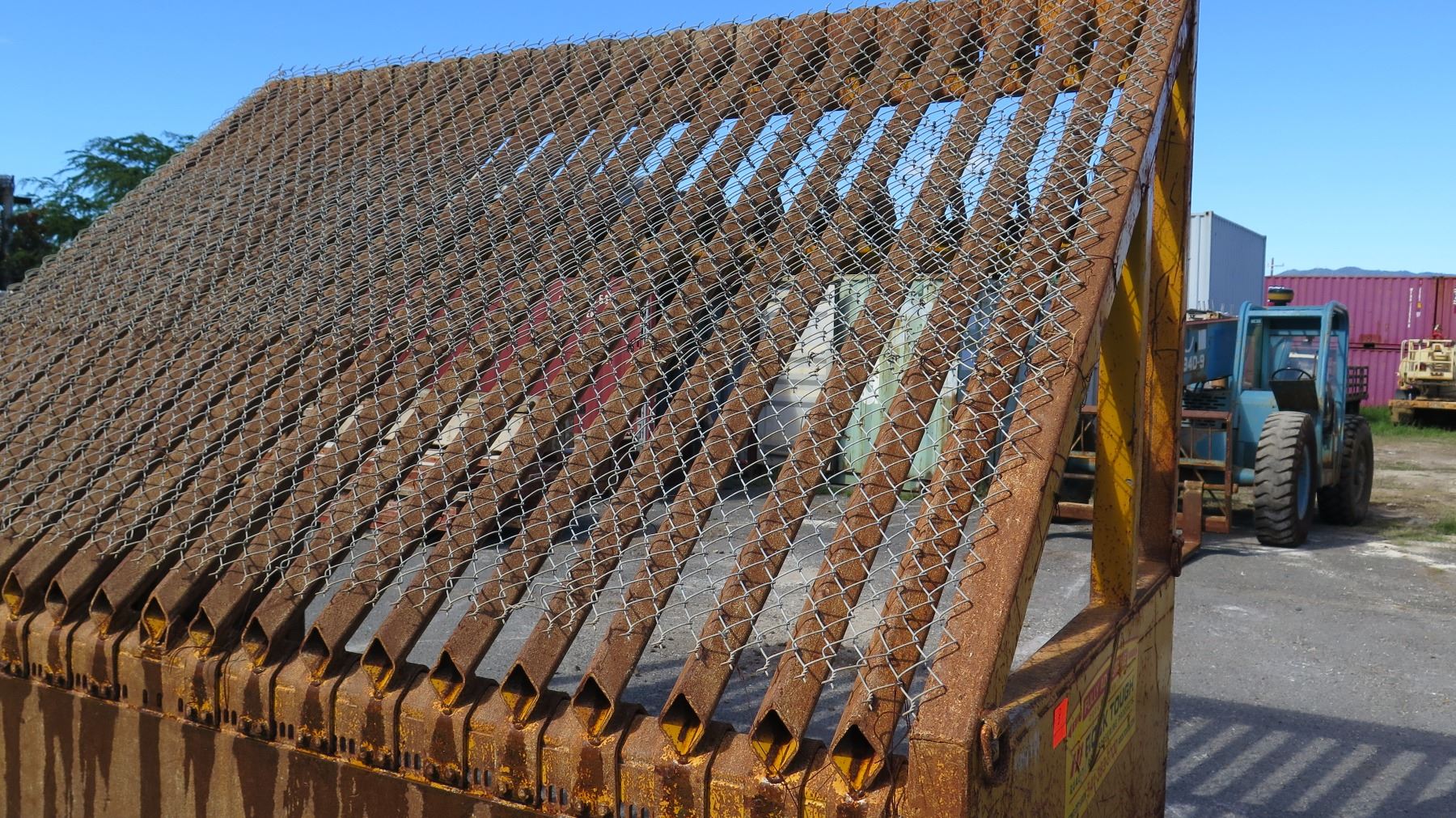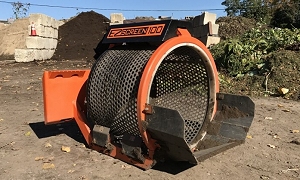Transform Your Testing Operations with a State-of-the-Art Dirt Screen for Sale
Transform Your Testing Operations with a State-of-the-Art Dirt Screen for Sale
Blog Article
Enhance Material Healing With State-Of-The-Art Dust Screens for Recycling Facilities
In today's world, where ecological sustainability is a pushing concern, reusing facilities play a crucial role in reducing waste and preserving sources. Maximizing material recovery can be a complicated procedure, often prevented by the visibility of dirt and particles in the reusing stream. This is where modern dirt screens enter into play, using an encouraging option to boost product healing rates. By effectively dividing unwanted contaminants, these advanced displays hold the prospective to change recycling facilities' procedures. Yet just how precisely do dirt screens improve product recuperation? What are the vital attributes that make them advanced? And exactly how can recycling centers implement them efficiently? In this conversation, we will check out the solutions to these inquiries and explore real-life study that highlight the successful integration of dirt displays in reusing facilities. Prepare to discover the transformative power of modern dirt displays and their effect on enhancing product healing.
The Importance of Dirt Screens in Recycling Facilities
Dirt screens play a critical role in reusing facilities by effectively dividing dirt and various other pollutants from recyclable products. These displays, likewise called trommel displays, are designed to efficiently remove unwanted particles and make certain that just clean and usable materials are refined further.
The primary function of dust displays is to separate bigger items of dust, rocks, and various other non-recyclable things from the stream of products. By doing so, they stop these pollutants from going into the recycling process and possibly harmful equipment or compromising the quality of the final product.
Additionally, dust screens help to enhance the total effectiveness of reusing procedures. By getting rid of dust and other impurities early at the same time, the screens reduce the amount of manual work called for to arrange and clean the materials later. This not just saves time yet also raises and lowers prices efficiency.
Furthermore, the use of dirt displays adds to environmental sustainability. By making sure that uncontaminated and just tidy products are processed, reusing facilities can generate higher-quality recycled items. This, subsequently, motivates the use of recycled materials in various markets, decreasing the demand for virgin sources and reducing the environmental impact of resource removal and manufacturing procedures.
Exactly How Dust Screens Improve Material Healing
Utilizing dust screens in recycling facilities substantially improves the process of product recuperation. These displays play an essential duty in dividing dirt, particles, and various other unwanted products from the recyclable stream, resulting in boosted efficiency and higher high quality output.
Among the major methods which dirt screens enhance material recuperation is by getting rid of pollutants that can hinder the recycling process. Dirt, rocks, and various other non-recyclable products can create damage to equipment, reduce the effectiveness of subsequent sorting procedures, and infect the last recycled products. By successfully screening out these pollutants, dirt screens aid guarantee that the recyclable materials remain pure and of excellent quality.
In addition, dust displays enable reusing centers to recoup a greater quantity of valuable materials. By getting rid of dust and debris, the screens enable for a much more accurate sorting process, boosting the recuperation rate of recyclable materials. This suggests that even more valuable resources can be reclaimed and reused, decreasing the need for virgin materials and reducing the ecological impact connected with their extraction and manufacturing.
Along with improving product recuperation, dust displays also add to the total performance of recycling facilities. By preventing equipment damages and reducing downtime triggered by obstructions and clogs, these displays aid maintain a nonstop and smooth recycling procedure. This raised performance converts right into expense savings and enables greater throughput, inevitably improving the profitability and sustainability of reusing procedures.
Trick Functions of State-of-the-Art Dust Screens
To even more improve the efficiency and effectiveness of material recuperation in reusing centers, advanced dust displays are equipped with vital attributes that optimize the splitting up procedure and make sure the finest outcome (dirt screen for sale). These attributes include advanced screening modern technology, adjustable setups, and durable building
One trick my link feature of advanced dirt displays is their advanced testing technology. These screens are made with precision-engineered mesh or perforated plates that properly separate dust and particles from the recyclable materials. The size and spacing of the openings in the displays can be personalized to suit various sorts of products, enabling reliable separation and maximum recovery rates.
Another vital function of these dust screens is their adjustable settings. Recycling facilities can adjust the rate, angle, and amplitude of the displays to maximize the separation process. This adaptability enables operators to fine-tune the screens according to the specific needs of the products being refined, leading to improved precision and greater recuperation prices.
Additionally, cutting edge dirt displays are developed with robust construction to withstand the rough problems of recycling facilities. They are made from sturdy materials such as stainless-steel or high-strength alloys, guaranteeing durability and marginal downtime as a result of maintenance or fixings. In addition, these displays are created with easy gain access to for cleansing and maintenance, minimizing and promoting efficient procedures downtime.
Actions to Applying Dust Screens in Recycling Facilities
What are the required steps for including dust screens into recycling facilities? Carrying out dirt screens in reusing facilities includes an organized technique to make certain reliable installation and procedure. The complying with are the required actions to effectively integrate dirt displays:
Assessment: Conduct a thorough analysis of the center's needs and demands to determine the suitable dust screen specs. Consider aspects such as product type, volume, and preferred splitting up effectiveness.

Installation: Prepare the center for the installation of the dirt screens. Adhere to maker standards and ensure appropriate placement and combination with the reusing process.
Checking and Calibration: Once the dirt screens are installed, perform thorough screening to make certain correct performance. dirt screen for sale. Adjust the system to attain wanted separation performance and decrease worldly loss
Training and Maintenance: Train staff on operating and maintaining the dirt screen system. Develop a routine upkeep timetable, consisting of cleaning and evaluation, to ensure ideal efficiency and longevity.

Study: Successful Product Healing With Dirt Screens
Integrating dust screens right into recycling centers has actually verified to be a successful technique for achieving efficient product recuperation, as demonstrated by several instance research studies. These case researches highlight the favorable influence of dust screens on the overall recycling process.
By carrying out dust displays, the facility was able to substantially lower the quantity of contamination in their recyclable materials. The introduction of dust Discover More Here displays also helped to tear and decrease the wear on arranging tools, lowering maintenance costs and downtime.
An additional situation research showcases a country recycling facility that dealt with excessive dirt and particles in their inbound waste stream. By setting up dust screens, the center had the ability to eliminate a big portion of the undesirable products, resulting in cleaner recyclables and enhanced effectiveness in the arranging process. This brought about greater product recuperation prices and lowered waste sent out to the land fill.
These case research studies demonstrate that integrating dust screens into reusing centers can have a considerable positive effect on material healing. By properly removing dirt, particles, and other impurities, recycling centers can enhance their total recycling rates, decrease land fill waste, and take full advantage of the worth of retrieved materials.
Final Thought
In conclusion, using cutting edge dust displays in recycling facilities is critical for boosting material healing. These displays properly eliminate dirt and debris, enabling the efficient separation and recovery of useful products. By executing dust screens, reusing centers can considerably enhance their reusing processes and add to an extra lasting future.
One of the main means in which dirt screens enhance product recuperation is by removing impurities that can prevent the reusing procedure. By efficiently evaluating out these pollutants, dust displays aid make certain that the recyclable products remain pure and of high quality.
In addition, dirt screens enable reusing facilities to recoup a better quantity of important products.In enhancement to enhancing material recovery, dust displays also contribute to the overall effectiveness of recycling centers.In conclusion, the use of advanced dirt displays in recycling centers is vital for enhancing product healing.
Report this page